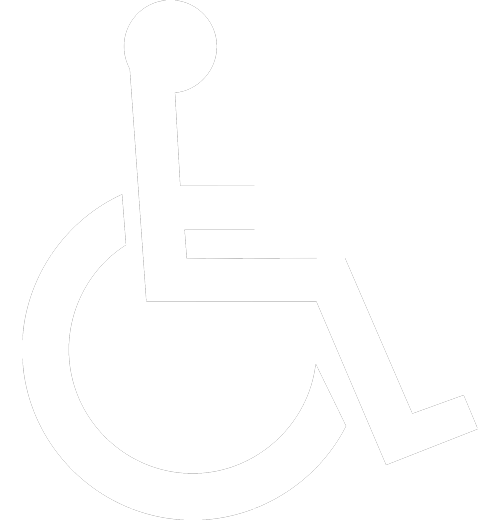What to Know About Daylight Saving Time
As the days grow longer and the weather starts to warm, you can plan on the arrival of Daylight Saving Time. It’s a practice that’s been around for over a century, aimed at making better use of natural daylight and conserving energy. But every year, there’s confusion and debate surrounding when the clocks spring forward and fall back, the impact on daily life, and the benefits of Daylight Saving Time. Let’s explore what you need to know about Daylight Saving Time in 2024.
 When Does Daylight Saving Time Begin and End in 2024?
When Does Daylight Saving Time Begin and End in 2024?
In 2024, Daylight Saving Time in the United States will start on March 10th and end on November 3rd. On March 10th, clocks will be set forward by one hour at 2:00 a.m., effectively “losing” an hour. This shift to a later time allows for more daylight in the evening, which can be particularly advantageous during the spring and summer months when outdoor activities are more common.
Conversely, on November 3rd, Daylight Saving Time will conclude, and clocks will “fall back” by one hour at 2:00 a.m. This extra hour of sleep in the morning is often met with enthusiasm, especially among those who appreciate a bit more rest.
These dates may vary slightly in different regions and countries, as not all nations observe Daylight Saving Time, and some may have different start and end dates.
The History of Daylight Saving Time
The concept of Daylight Saving Time is often attributed to Benjamin Franklin, who humorously suggested it in a 1784 essay as a way to conserve candles by making better use of daylight. However, the idea wasn’t put into practice until World War I when several countries, including the United States, adopted Daylight Saving Time as a way to save energy.
In the United States, the Uniform Time Act of 1966 standardized the start and end dates of Daylight Saving Time. However, the observance of Daylight Saving Time has changed over the years, with some states and regions choosing not to participate or opting for different time changes.
The reasons for Daylight Saving Time have evolved. While energy conservation was a significant motivation during wartime, today, the rationale is more diverse. Proponents argue that Daylight Saving Time helps reduce energy consumption, promotes outdoor activities, and can have a positive impact on the economy. Opponents, on the other hand, argue that the clock changes can disrupt sleep patterns, cause confusion, and have little effect on energy savings.
The Impact of Daylight Saving Time on Daily Life
Daylight Saving Time can have a mixed impact on daily life. Here are some of the key effects it may have on individuals and society:
- Sleep Patterns: The shift in time can temporarily disrupt sleep patterns as people adjust to the new schedule. For some, the loss of an hour of sleep in the spring can lead to feelings of fatigue and irritability.
- Increased Daylight: Longer daylight hours in the evening can encourage people to engage in outdoor activities like jogging, gardening, or simply enjoying a walk in the park. This can have a positive impact on physical and mental well-being.
- Energy Savings: The primary objective of Daylight Saving Time has traditionally been to reduce energy consumption. By extending daylight hours, it is believed that people will rely less on artificial lighting and heating. However, the extent of these energy savings remains a subject of debate.
- Economic Impact: Longer daylight hours in the evening may boost the economy by encouraging people to spend more time shopping, dining out, or participating in other leisure activities. The idea is that increased economic activity can lead to job creation and higher profits for businesses.
- Traffic Accidents: Some studies suggest that there may be a temporary increase in traffic accidents immediately after the clock change, possibly due to disrupted sleep patterns. Conversely, the increased daylight in the evening may reduce the number of accidents in the long run.
- Productivity: Proponents argue that Daylight Saving Time can boost productivity and reduce absenteeism, as the extra daylight can have a positive impact on mood and motivation.
Controversies Surrounding Daylight Saving Time
Daylight Saving Time is not without its controversies, and there are strong arguments both for and against it:
Pros
- Energy Savings: Proponents argue that Daylight Saving Time reduces the demand for electricity and, therefore, conserves energy.
- Health Benefits: The longer daylight hours can encourage people to be more active and spend time outdoors, which can have positive effects on physical and mental health.
- Economic Benefits: Businesses in the retail and hospitality sectors often benefit from Daylight Saving Time, as people are more likely to shop and dine out during the extended evening hours.
Cons
- Sleep Disruption: The clock changes can temporarily disrupt sleep patterns, leading to feelings of fatigue and irritability.
- Efficacy Debate: The actual energy savings associated with Daylight Saving Time are a subject of debate, with some studies suggesting that the savings are minimal.
- Confusion and Hassle: The twice-yearly clock changes can lead to confusion and inconvenience. People must adjust their schedules, which can be especially challenging for those with rigid daily routines.
- Health Risks: Some studies have linked Daylight Saving Time to an increase in the risk of heart attacks and strokes in the days following the time change.
- Differing Time Zones: In the United States, not all states and territories observe Daylight Saving Time, which can lead to time discrepancies and scheduling challenges.
The Future of Daylight Saving Time
The practice of Daylight Saving Time is constantly evolving and remains a topic of debate. Some regions and countries are considering abolishing Daylight Saving Time altogether, while others are considering extending it year-round. The decision to observe Daylight Saving Time or not, and the specifics of its implementation, remain in the hands of individual governments and regions.
In 2018, the European Union voted to abolish seasonal clock changes, but as of 2024, the transition has not been completed, and different countries within the EU continue to observe Daylight Saving Time.
As for the United States, while there have been discussions and proposed legislation to make Daylight Saving Time permanent, the situation is still evolving, and it’s uncertain whether the country will continue to transition between standard and daylight saving time in the future.
Daylight Saving Time is a long-standing practice with both proponents and critics. Regardless of your stance on Daylight Saving Time, it’s essential to be aware of the changes and the potential impact on your daily life in 2024.






